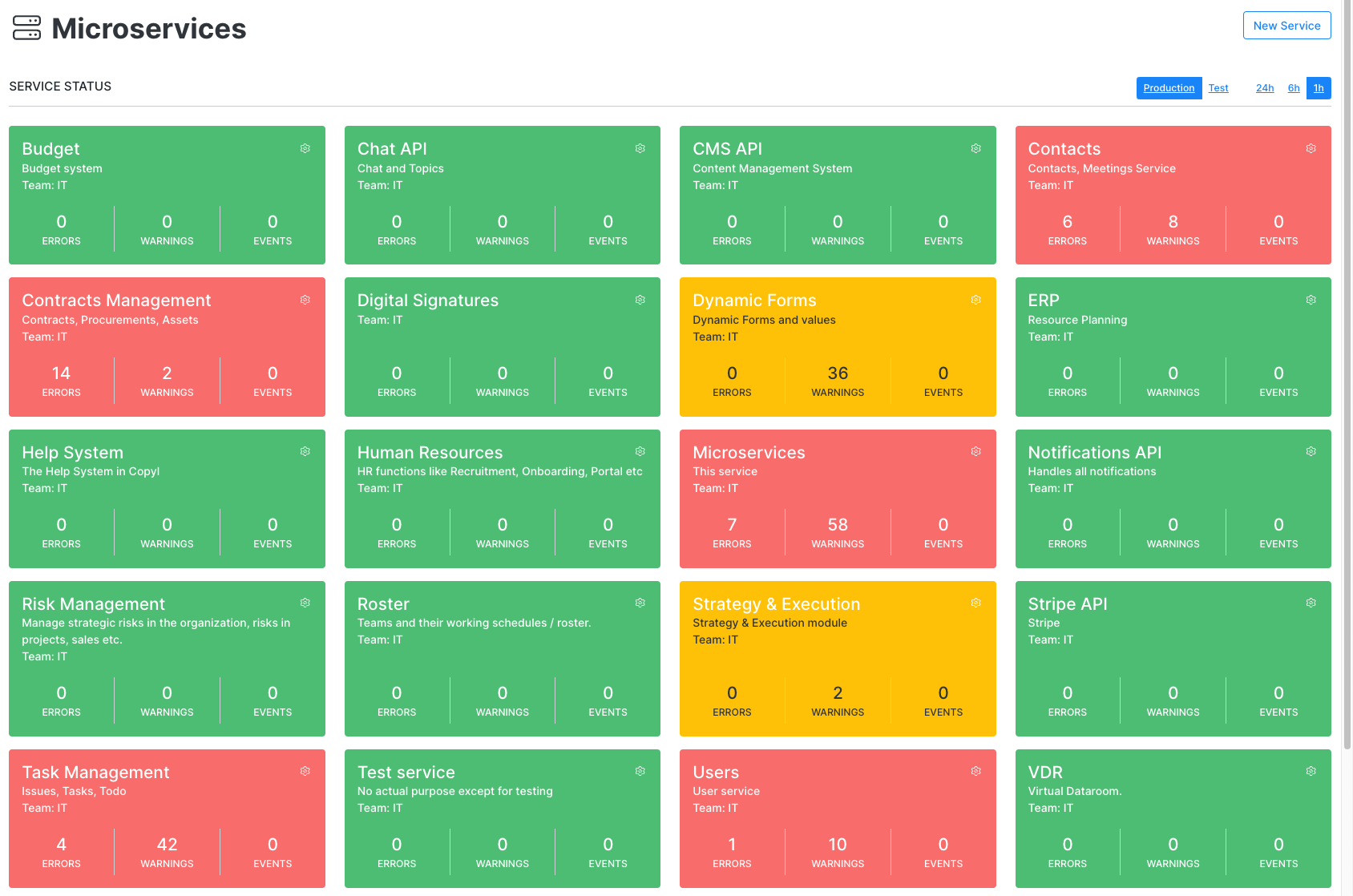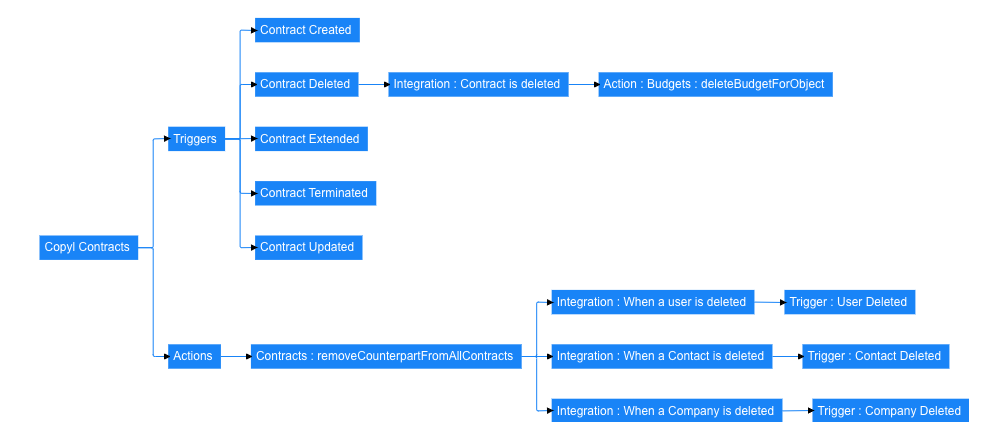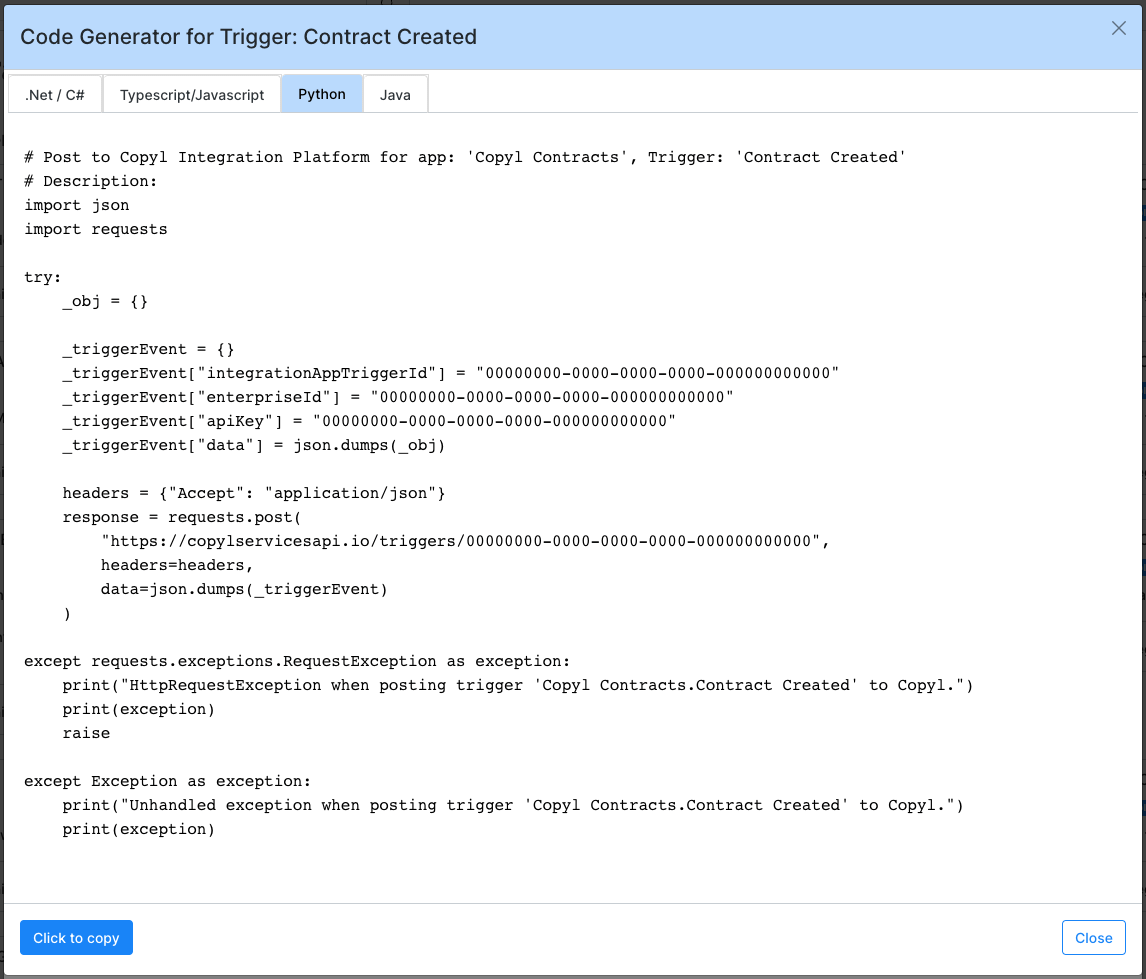Copyl’s Integration Platform Boosts Your Business Operations
In the high-stakes, fast-paced arena of business, there’s a secret to standing out from the crowd. It’s not about the hardest workers or the biggest
The Microservice Management in Copyl saves you money by streamlining the development process. It also make the solution more future safe because all documentation is saved in one place for all microservices. You save money and valuable developer time by having one place for all logging and all documentation. No more looking in different systems, databases, repositories and documents.
Copyl’s Integration Platform is integrated with the Microservice Management module. They share the Applications and Data Models that are defined in both products.
If you also use the Project Management module in Copyl you get even more benefits. All project history for each development project is reachable from the microservice page.
So to summarize the picture above; the more features you are using in Copyl – the more integrated solution you get. It’s even more integrated in the real world; e.g. when you have an error in the microservice trace/logging you want to create a Task for.


Microservice architecture means new opportunities for most organizations. Faster development and faster time-to-market. Independent, loosely coupled, services that can be released/updated at any time. The team is responsible for the application roadmap and for developing and maintaing the microservice. The team also has the freedom to use any technology within each service.
We know from our own experience and from helping other companies that implementation of microservice architecture means new challenges that needs to be addressed for a successful implementation.
The absolute most common communication between microservices are via REST API. It’s done over https and requires no or very little configuration on the network.
We recommend to use the standard methods for your api requests; GET for fetching data, POST for saving new data, PUT for updating and DELETE for deletion. PATCH can also be used for updating, it’s a matter of taste.
One common way of describing the microservice’s methods is to use an OpenAPI/Swagger that will create an HTML-page with all methods and data models described. Swagger documentation will be created automatically if you use e.g. Swashbuckle in your .net project.
gRPC is another a common protocol to use for communication between microservices. It’s faster than http.
gRPC and HTTP REST are both ways to transfer data over a network, but they have some differences.
gRPC is a modern, open source, high-performance RPC framework that can run in any environment. It uses HTTP/2 for transport, Protocol Buffers as the interface description language, and provides features such as bidirectional streaming and flow control, cancelling long-running operations, and authentication.
On the other hand, HTTP REST is a architectural style for building distributed systems that can be used with any application protocol running over any transport. It is based on the idea of representing a system’s resources as a set of interconnected nodes, and using HTTP verbs (such as GET, POST, PUT, DELETE) to manipulate these resources. REST is widely used because it is simple and flexible.
In general, gRPC is better suited for situations where performance and efficiency are important, while REST is more widely adopted and easier to use in a variety of situations.


In the high-stakes, fast-paced arena of business, there’s a secret to standing out from the crowd. It’s not about the hardest workers or the biggest
Welcome to the future of tech, where microservice management takes center stage, radically transforming the landscape of business operations. In this increasingly interconnected world, software
Most of our customers have not strategically taken the decision to be cloud-agnostic so they are using cloud-native services to run their business on. Example
Why is integrations important for companies? Integrations ensure data consistency by allowing systems to share and update data in real-time, reducing discrepancies and providing accurate,
We listen and learn from our customers and we have therefore started to implement some big changes that will affect new customers. Existing customers will
Copyl is probably the most broad ERP Software as a Service (SaaS) in the market today, with modules for workforce planning, project management, contract management,
